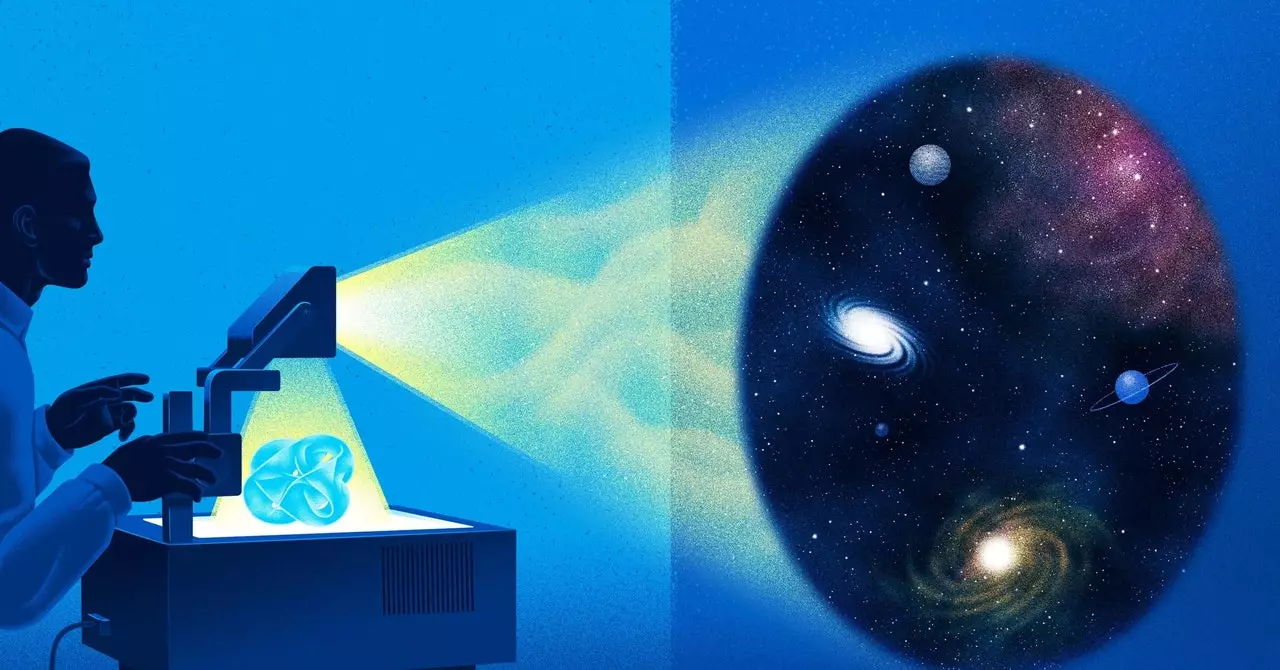In recent years, a group of string theory veterans led by Burt Ovrut of the University of Pennsylvania and Andre Lukas of Oxford have been exploring new avenues in string theory research. Utilizing metric-calculating software developed by Lukas, they incorporated 11 neural networks to handle various types of sprinkles. These networks enabled them to calculate a diverse range of fields, allowing for a more realistic analysis of complex shapes that was previously unattainable through traditional techniques. The success of this approach marks a significant advancement in the field, demonstrating the potential of machine-learning algorithms in unraveling the mysteries of string theory.
One of the remarkable achievements of this research group is the ability to calculate Yukawa couplings and the masses of quarks with unprecedented accuracy. By applying machine learning algorithms to analyze six differently shaped Calabi-Yau manifolds, they have reached a level of precision that was previously unimaginable. While the specific Calabi-Yau structures studied may not correspond to the universe we inhabit, the results serve as a proof of concept for the efficacy of employing neural networks in complex theoretical physics calculations. This breakthrough opens up new possibilities for exploring the intricate relationships between fundamental particles and their underlying geometry.
Despite the significant progress made by the research group, there are challenges and limitations inherent in using machine learning in string theory research. The neural networks utilized in the study encounter difficulties when faced with more complex manifolds, particularly those with a high number of holes. Researchers are also aware of the need to expand their analysis to incorporate a wider range of quantum fields in order to fully capture the intricacies of the standard model. As physicist Ashmore pointed out, a more sophisticated neural network may be required to navigate the complexities of string theory and particle physics.
The quest to uncover the mysteries of particle physics within the framework of string theory is akin to a numbers game. By systematically exploring a vast array of Calabi-Yau manifolds, researchers increase the likelihood of identifying patterns that could lead to groundbreaking discoveries. The sheer volume of potential solutions underscores the daunting nature of this endeavor, with the number of possible Calabi-Yau structures possibly extending to infinity. String theorists recognize the need to approach this challenge strategically, leveraging machine learning tools to streamline the search for viable string theory solutions that align with observable phenomena.
While some researchers, such as Lukas and his team at Oxford, focus on scrutinizing individual manifolds in search of realistic particle populations, others advocate for a broader approach. String theorist Thomas Van Riet of KU Leuven advocates for the “swampland” research program, which aims to identify universal features shared by all mathematically consistent string theory solutions. By ruling out vast swathes of string solutions based on fundamental principles, researchers can narrow down the search for viable string theory models that accurately describe the universe we inhabit.
The integration of machine learning algorithms into string theory research represents a significant milestone in the quest to unravel the fundamental forces of the universe. While challenges and uncertainties remain, the innovative approaches taken by researchers offer promise for uncovering new insights into the intricate relationship between geometry and particle physics. As the field of string theory continues to evolve, the fusion of advanced computational techniques with theoretical physics holds the potential to unlock the secrets of the cosmos.


Leave a Reply